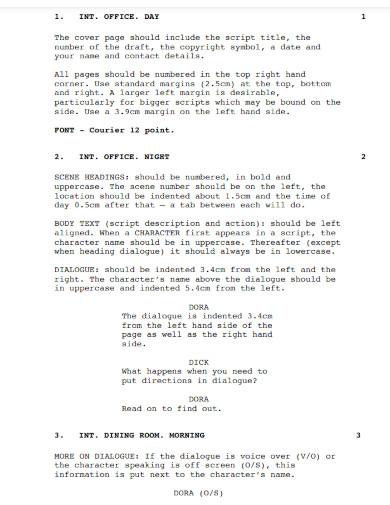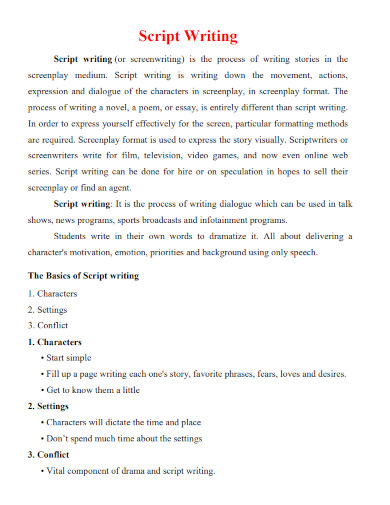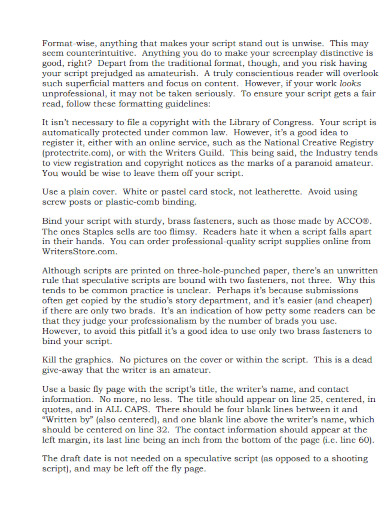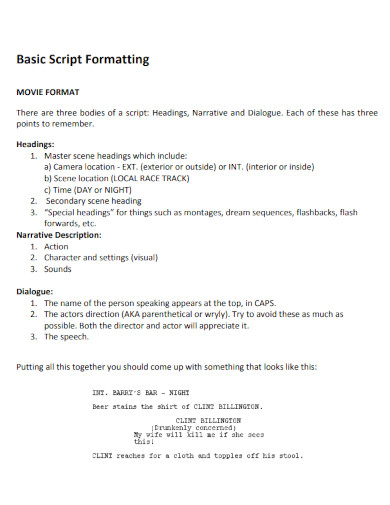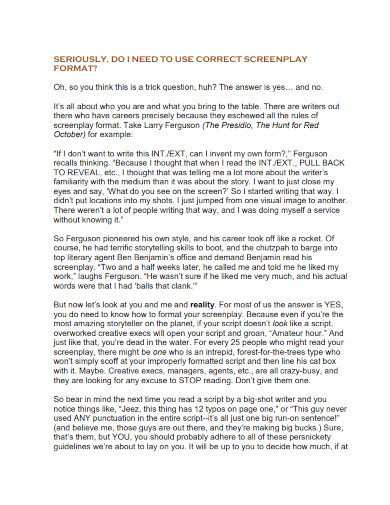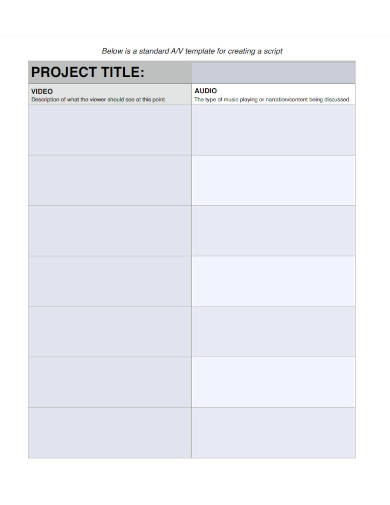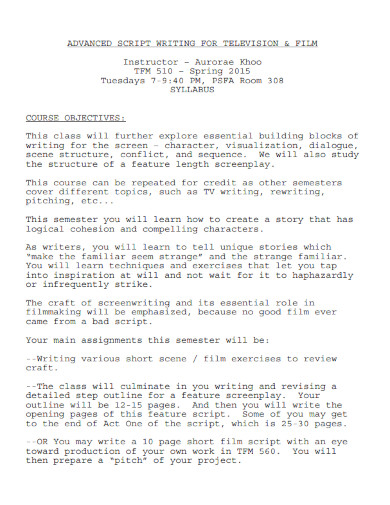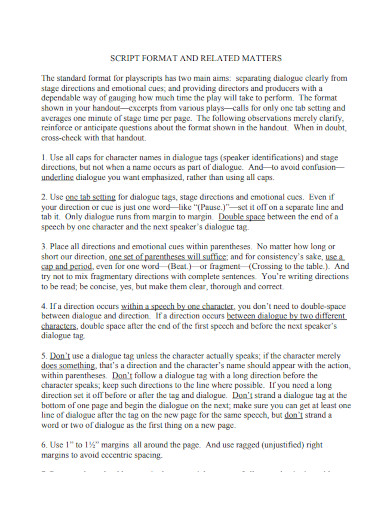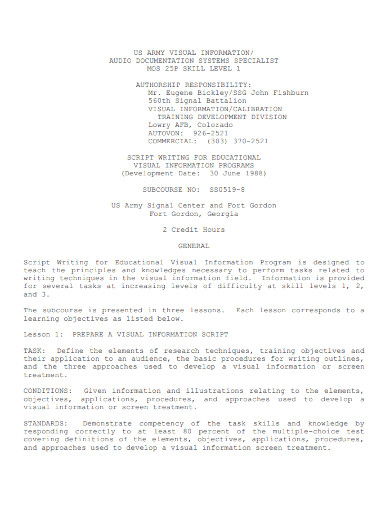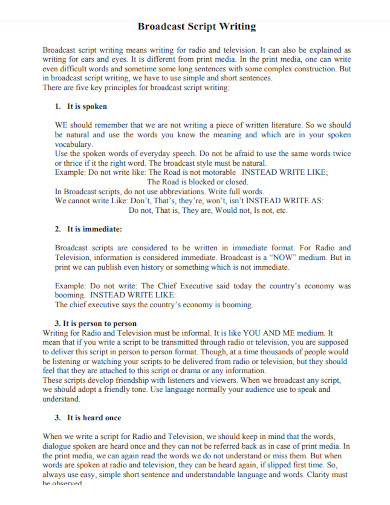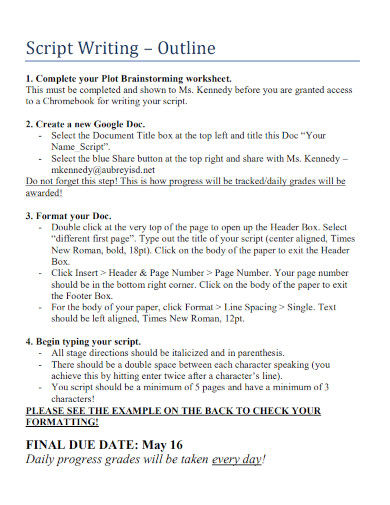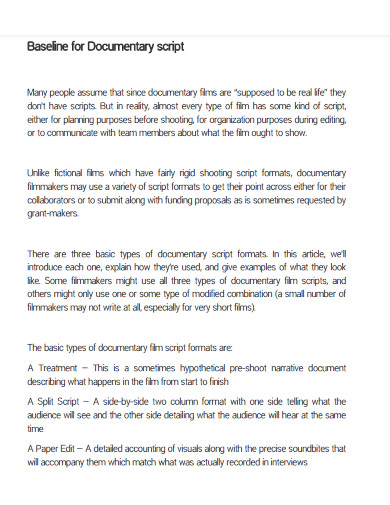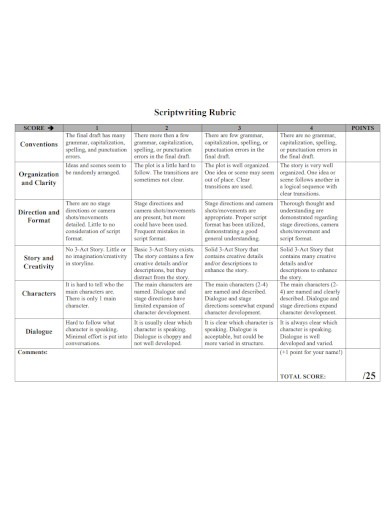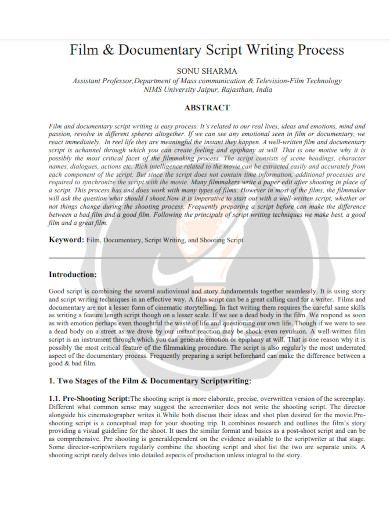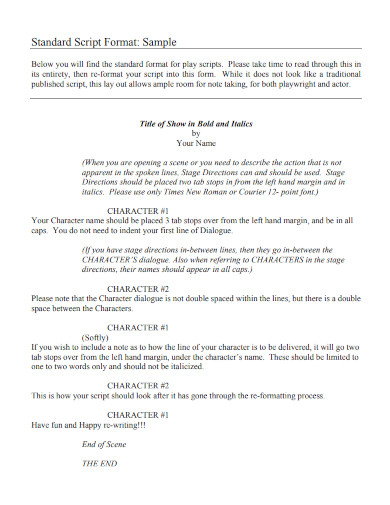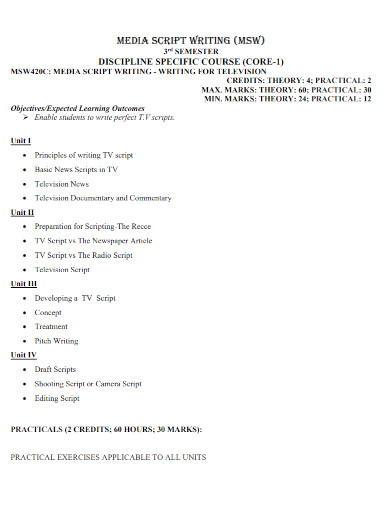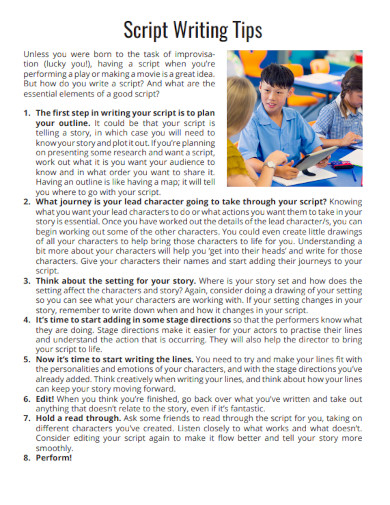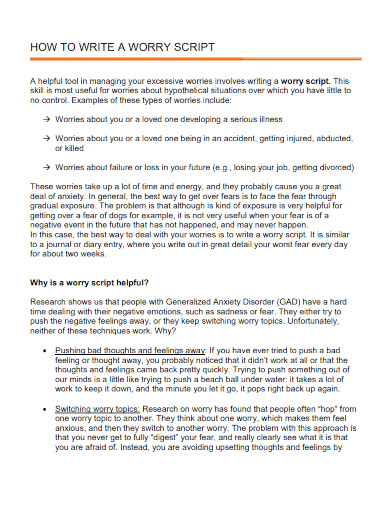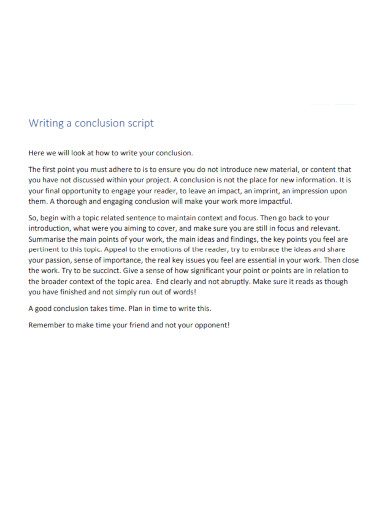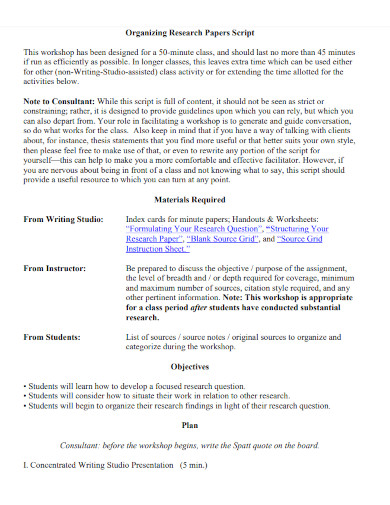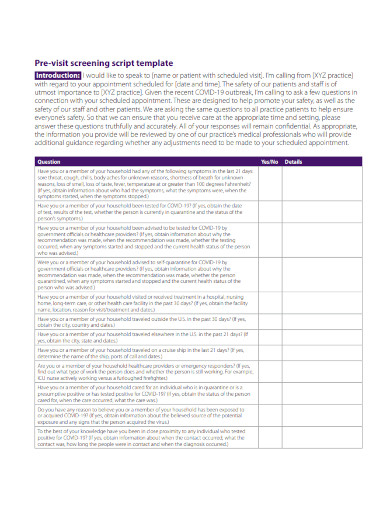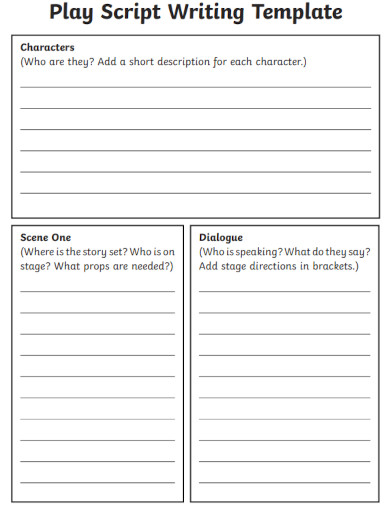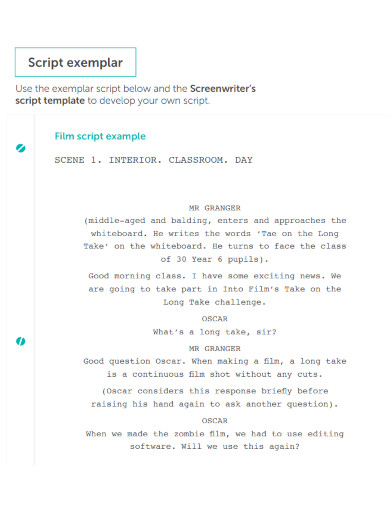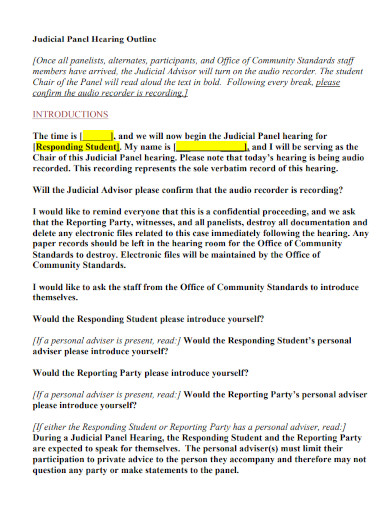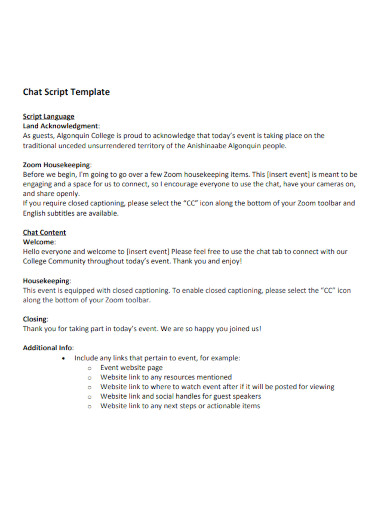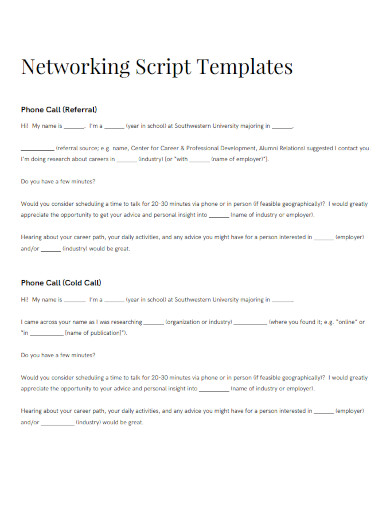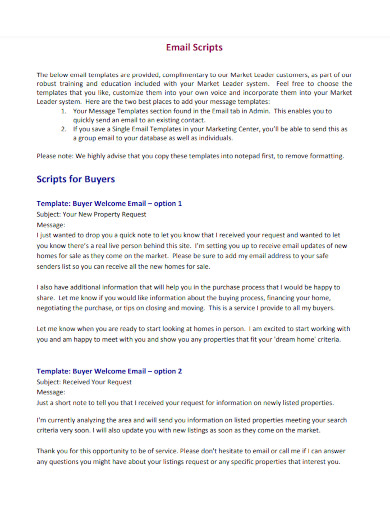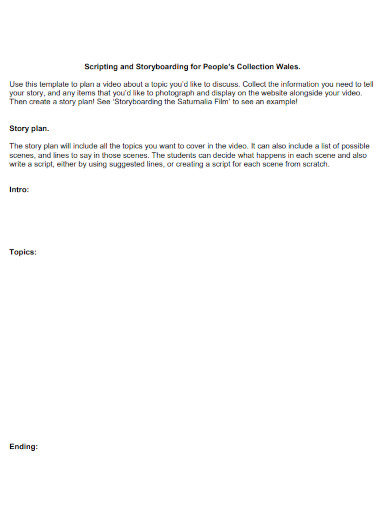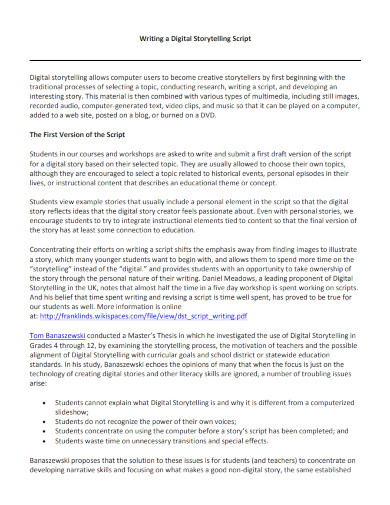70+ Script Examples
A script is a written document that outlines the dialogue, actions, and stage directions for a film, play, television show, or any other performance. In the context of English and screenplay writing, a script serves as the blueprint for bringing a story to life on screen, detailing everything from character interactions to visual elements. It provides the essential framework for directors, actors, and production teams to follow, ensuring a cohesive and engaging narrative.
What is a Script?
Examples of Script
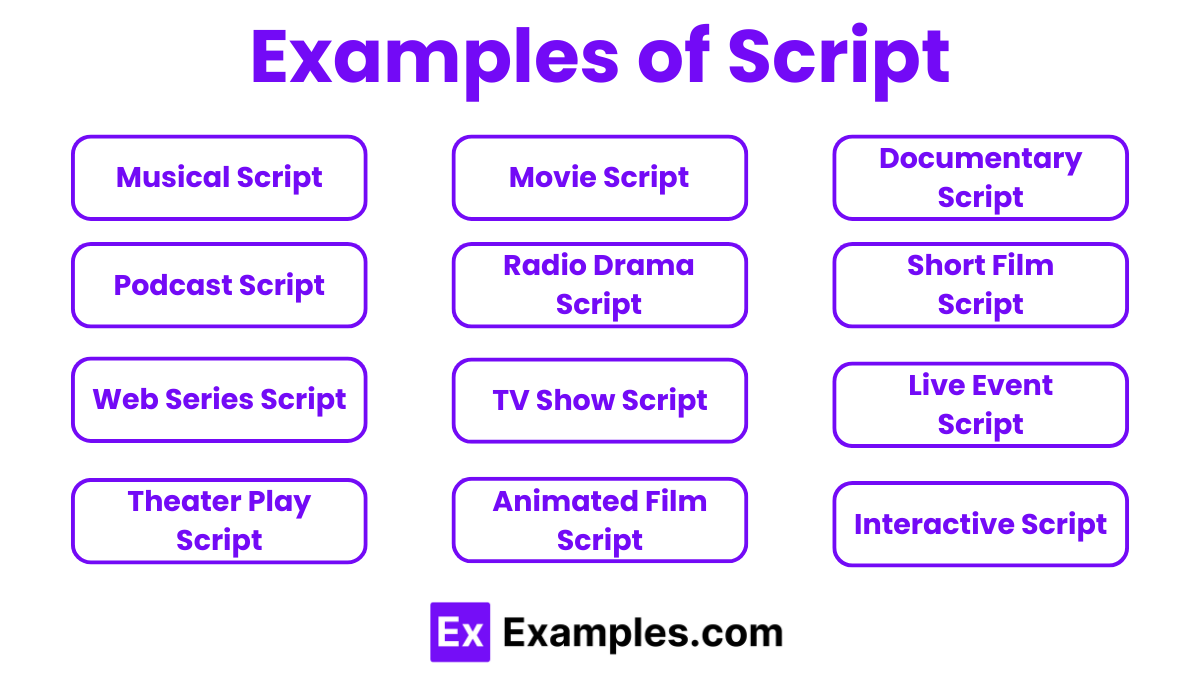
- Movie Script: “The Shawshank Redemption” screenplay by Frank Darabont.
- TV Show Script: “Friends” pilot episode written by David Crane and Marta Kauffman.
- Theater Play Script: “Romeo and Juliet” by William Shakespeare.
- Radio Drama Script: “The War of the Worlds” by H.G. Wells, adapted by Orson Welles.
- Podcast Script: “Serial” Season 1 Episode 1 by Sarah Koenig.
- Commercial Script: A 30-second script for a Coca-Cola advertisement.
- Video Game Script: “The Last of Us” by Neil Druckmann.
- Musical Script: “Hamilton” by Lin-Manuel Miranda.
- Animated Film Script: “Toy Story” by Joss Whedon, Andrew Stanton, Joel Cohen, and Alec Sokolow.
- Educational Video Script: A script for a Khan Academy math lesson.
- Corporate Training Video Script: A script for employee onboarding at Google.
- Web Series Script: “The Guild” by Felicia Day.
- Documentary Script: “Planet Earth” narrated by David Attenborough.
- YouTube Tutorial Script: A makeup tutorial by a beauty influencer.
- Audiobook Script: “Harry Potter and the Sorcerer’s Stone” by J.K. Rowling, adapted for a.
- Short Film Script: “Paperman” by John Kahrs.
- Public Service Announcement Script: A PSA on the dangers of texting and driving.
- Stand-Up Comedy Script: A comedy routine by Kevin Hart.
- Interactive Script: “Bandersnatch” from the “Black Mirror” series on Netflix.
- Live Event Script: The script for hosting the Oscars, written for the event’s host.
Examples of Script for Students
- School Play Script: “A Midsummer Night’s Dream” by William Shakespeare, adapted for middle school students.
- Classroom Skit Script: A short skit on the importance of teamwork in school projects.
- Debate Script: Opening statements and arguments for a classroom debate on the topic of school uniforms.
- Presentation Script: A script for a science fair presentation on renewable energy.
- Graduation Speech Script: A valedictorian speech for a high school graduation ceremony.
- Morning Announcements Script: Daily announcements script for a high school, including upcoming events and important notices.
- Interview Script: A mock interview script for a student learning how to conduct and answer interview questions.
- Book Report Script: A script for an oral book report presentation on “To Kill a Mockingbird” by Harper Lee.
- Drama Club Script: A one-act play written for a high school drama club performance.
- Public Speaking Script: A speech script for a student council election campaign.
Examples of Script for Kids
- Fairy Tale Play Script: An adaptation of “Cinderella” for young children to perform.
- Educational Skit Script: A short skit teaching the importance of brushing teeth.
- Puppet Show Script: A script for a puppet show about friendship and sharing.
- Reader’s Theater Script: A simple reader’s theater script of “The Three Little Pigs.”
- Holiday Play Script: A Christmas play about Santa’s workshop and the elves preparing for Christmas Eve.
- Nature Documentary Script: A child-friendly script for a nature documentary about the life cycle of butterflies.
- Safety Skit Script: A skit on playground safety rules and practices.
- Interactive Story Script: An interactive storytelling script of “Goldilocks and the Three Bears” where kids can participate.
- Alphabet Learning Script: A script for a fun educational show teaching kids the alphabet with rhymes and songs.
- Environmental Awareness Skit: A short skit about recycling and taking care of the planet.
1. Suggested Script Layout Format
2. Script Writing Template
3. Script Screenplay Format Guide
5. Basic Script Formatting
6. Professional Script Screenplay Format
7. Basic Technique of Script Writing for Films
8. Video Script Template
9. Advanced Script Writing for Film
10. Related Matters Script Format
11. Script Writing for Educational Visual
12. Broadcast Script Writing
13. Script Writing Outline
14. Script Format Specifications
15. Baseline for Documentary Script
16. Rubric Script Writing
17. Documentary Script Writing Process
18. Standard Script Format
19. Media Script Writing
20. Microlecture Script Format
21. Script Writing Tips
22. Writing a Worry Script
23. Conclusion Script Template
24. Organizing Research Paper Script
25. Pre-visit Screening Script Template
26. Play Script Writing Template
27. Screenwriter’s Script Template
28. Hearing Script Template
29. Chat Script Template
30. Networking Script Templates
31. Buyers Email Scripts
32. Script and Storyboard Template
33. Writing Digital Storytelling Script
How to Use a Script Format
Although challenging, the process of writing a script is one that pays huge dividends. Writing a successful screenplay requires a significant investment strategy of time and energy, and if you want to sell it, finishing the script’s first draft is only the beginning of the process. The process of creating and producing your screenplay may be broken down into the following stages.
Step 1: Layout the foundation
Excellent screenwriting begins with reading as many wonderful scripts as possible. It’s extremely helpful to read works in the same genre as the one you’re writing a screenplay for. It gets the gist of your short story analysis essay down on paper.
Step 2: Write a logline
The next step is to create a “logline.” Trees have nothing relevance to this at all. Instead, it’s a short (often one phrase) description of your story’s protagonist (hero), antagonist (villain), and conflict. The logline for your narrative should sum up its essential concept and topic in a few short words.
Step 3: Write the Script
You should get started on the first draft of your screenplay now that you know the fundamentals. Basically, your script has to be a paper document that:
90-120 pages long
Written in 12-point Courier font
Printed on 8.5″ x 11″, white, three-hole-punched paperStep 4: Wrap things up
It’s time to go back into the details once you’ve taken notes and received comments in order to polish up your final draft. Make as many changes as necessary to get your desired result. Making any necessary adjustments to the plot or characters initially might help alleviate broader issues with the screenplay.
What is a script example?
A script example includes a movie screenplay detailing dialogue, actions, and scene directions, like the screenplay for “The Godfather.”
What is script slang for?
Script slang refers to a prescription for medication, often abbreviated as “script” in informal conversations.
What does it mean to be on script?
To be on script means to follow a planned or predetermined course of action or dialogue without deviation.
What is script in life?
Script in life refers to a person’s life plan or expected sequence of events, influenced by social and cultural norms.
What does it mean when someone scripts?
When someone scripts, they write or plan out their dialogue or actions in advance, often for clarity or rehearsal.
Does script mean code?
Yes, script can mean code in computing, referring to a set of instructions written in a programming language to perform a specific task.
What is the hardest code script?
The hardest code script varies, but complex algorithms or low-level programming languages like Assembly are often considered difficult.
What is another term that defines a script?
Another term for a script is a “screenplay” or “playbook,” depending on the context.
What is script writing also called?
Script writing is also called “screenwriting,” especially when referring to writing for films and television.
What do you call a person who scripts?
A person who scripts is called a “scriptwriter” or “screenwriter,” particularly in the context of film and television.




